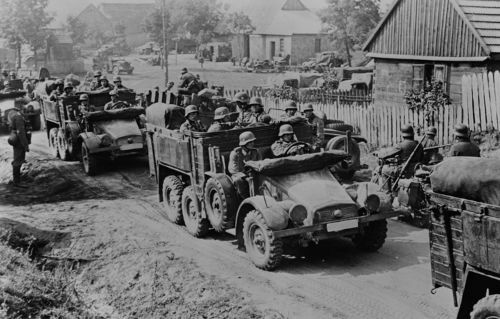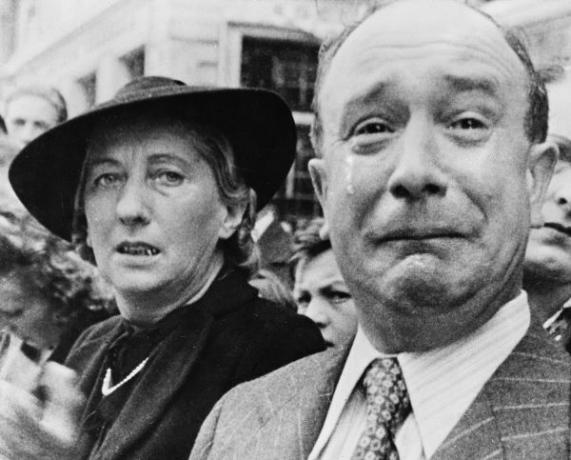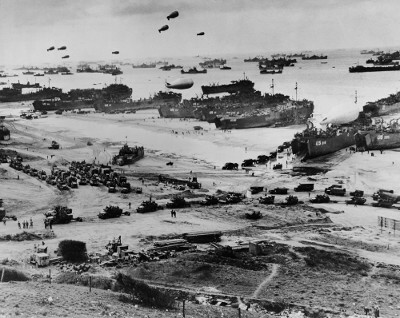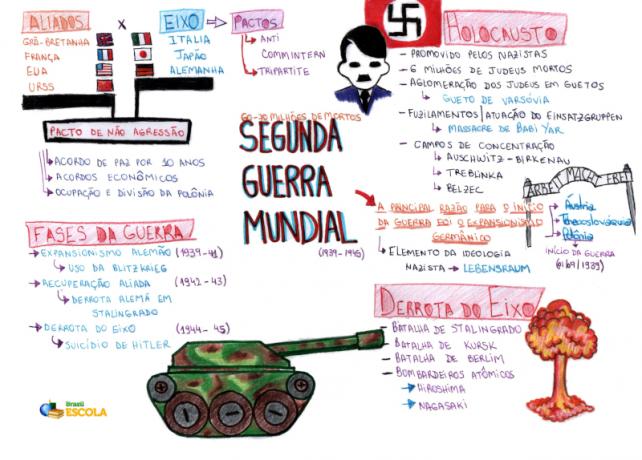On September 1, 1939, adolf hitler announced the beginning of military actions aimed at invasion of poland. This feat of the Nazi state served as a trigger for France and England to send an ultimatum demanding that such military action not be carried out. Through Hitler's silence, French and English declared war against the Germans. Despite the announcement, no major conflicts developed immediately following the German invasion process in Polish lands.

German soldiers during the invasion of Poland in 1939.
Axis Advance
The doldrums of that first moment, also known as the “lie war”, was broken when the forces of Adolf Hitler used several lightning attacks (known as “Blitzkrieg”) against the Netherlands, Norway, Denmark and Belgium. Through the domination of these territories, the Germans paved the way for the invasion of France to take place. In June 1940, the Germans advanced on the city of Paris and thus also dominated this important European territory.

Parisian citizen disheartened by the arrival of Nazi troops in the French capital.
Recognizing the expressive advance of the Germans, the Soviet government proposed a division of the world into zones of influence shared by Nazis and socialists. However, Moscow's proposal was clearly ignored when Hitler's forces advanced into Eastern Europe, promoting the surrender of Greeks, Romanians, Bulgarians, Albanians, Yugoslavs and Hungarians. Meanwhile, the Italians supported Hitler in North Africa, and the Japanese hit the United States in the Pearl Harbor region.
A little earlier, the British incredibly resisted the German attacks that followed the process of invasion of France. From a military point of view, a British defeat could mean rapid Nazi domination throughout Western Europe. However, thanks to the efficient equipment of the Royal Air Force, the British prevented this terrible Nazi triumph from taking place. The quick and complete victory of the Germans had been reined in at that moment.
Mind Map - World War II
*To download the mind map in PDF, Click here!
Invasion of the Soviet Union
In 1942, the triumph of the Rome-Berlin-Tokyo axis caused great losses to the allied countries. Encouraged by these results, the Nazis decided to invade the immense Soviet territory with the aim of expanding their domination in eastern lands. However, without being properly prepared for the extreme Siberian winter, the Germans were terribly defeated. At battle of Stalingrad, the Germans had a great defeat that initiated the Soviet march against Germany.
Also read: Alliances for World War II
Allied Mobilization
The possibility of beating the Axis forces encouraged a new mobilization of allies in that war. In 1943, Anglo-American forces managed to shoot down German and Italian soldiers who conquered North Africa. A little earlier, the Japanese suffered a serious defeat in the Midway Battle against the United States. In the second half of 1943, the Italians were defeated by US forces, and Benito Mussolini's government came to an end.
In June 1944, Anglo-American troops once again united to face the Germans. This time, the mission was to retake France through a surprise attack, carried out by Normandy. Known as "Day D”, such military action was of crucial importance for the Germans to lose any possibility of reaction. After that victory, all that was needed was to pressurize German territory using the western and eastern fronts of the allied forces.

Allied troops landed on the beaches of Normandy on June 6, 1944, on what became known as D-Day.
The end of the war
On May 7, 1945, the Germans made their surrender official. At that moment, all that was needed was to negotiate with the Japanese authorities the surrender of their forces, which were fighting alone in the Pacific Ocean. However, the Japanese refusal made the US opt for the dropping atomic bombs against Japanese space. In such a way, the Second World War came to an end with the tragic nuclear episode that happened in the cities of Hiroshima and Nagasaki.
By Rainer Sousa
Graduated in History
*Mental Map by Daniel Neves
Graduated in History
Source: Brazil School - https://brasilescola.uol.com.br/historiag/fases-segunda-guerra-mundial.htm

